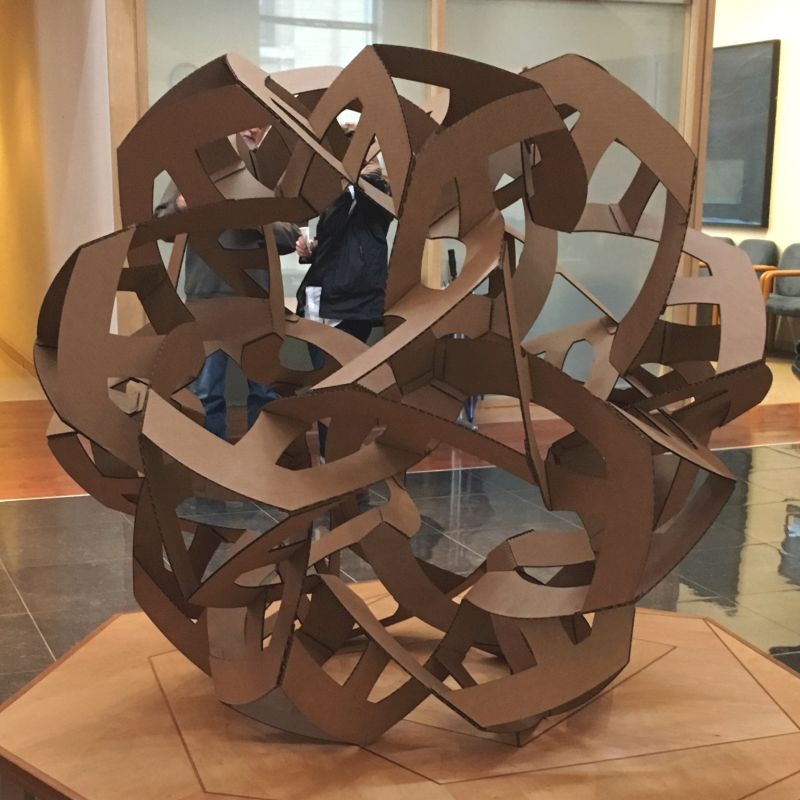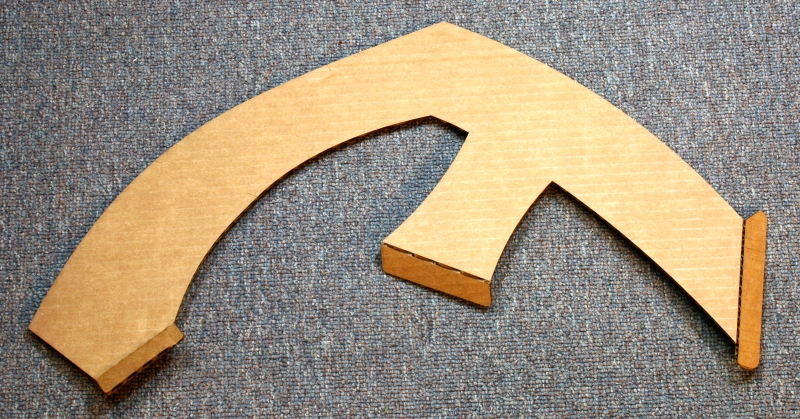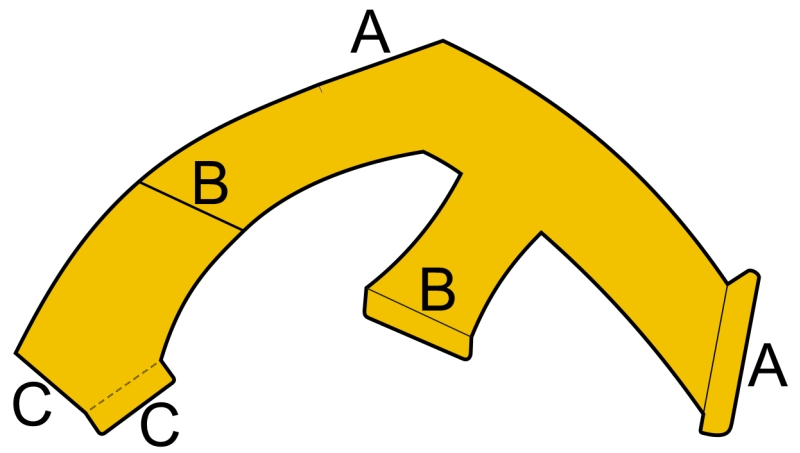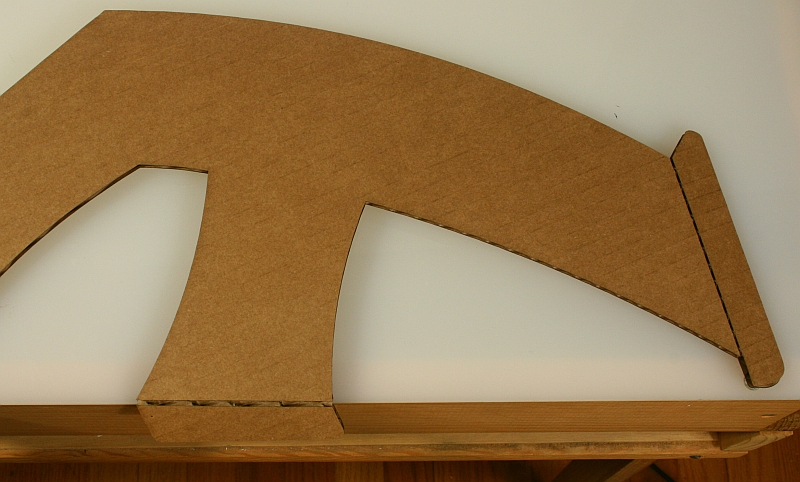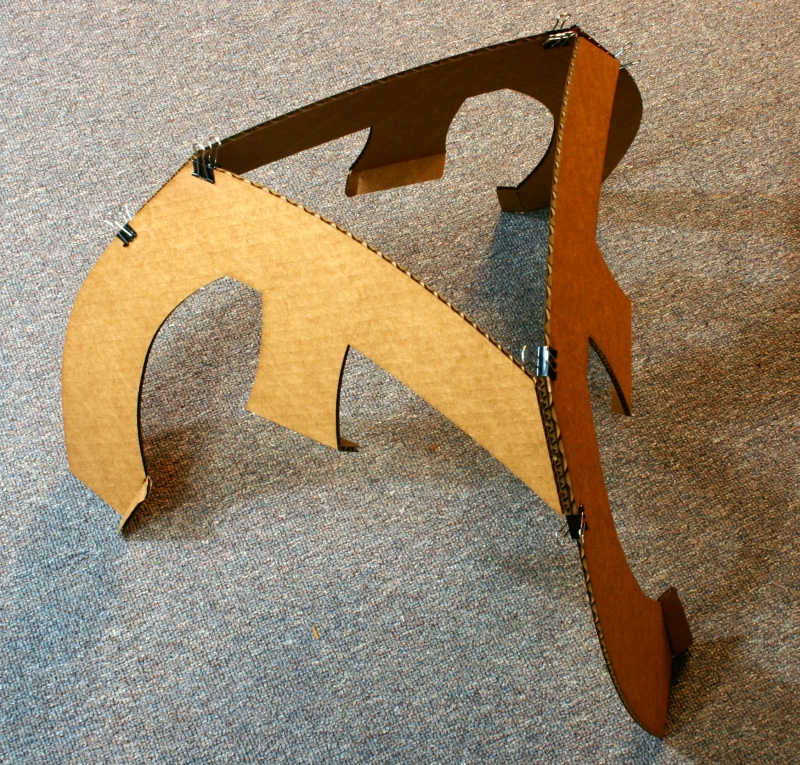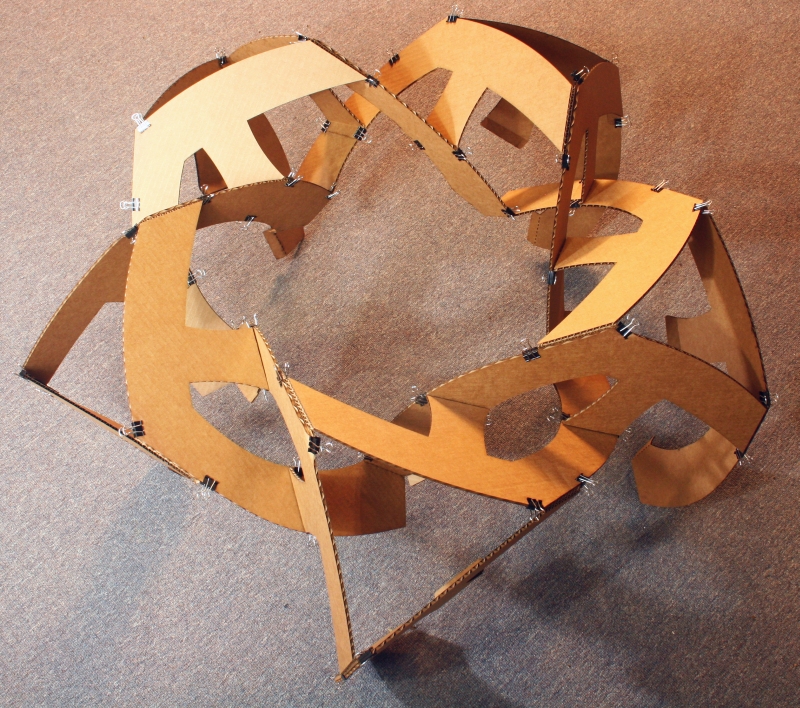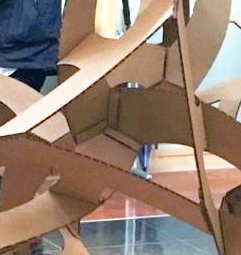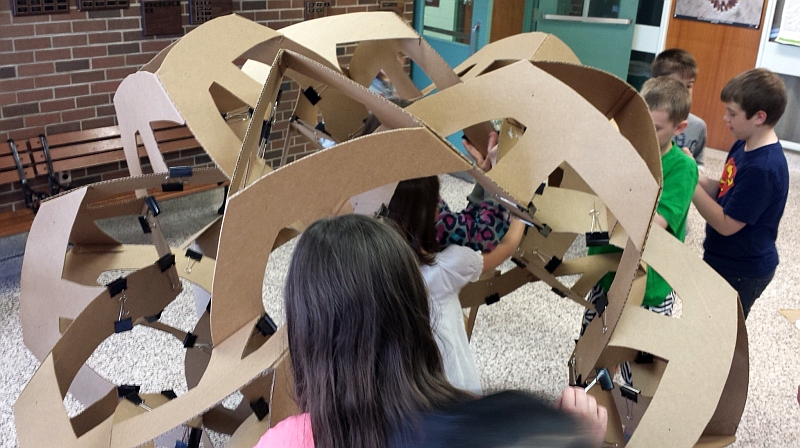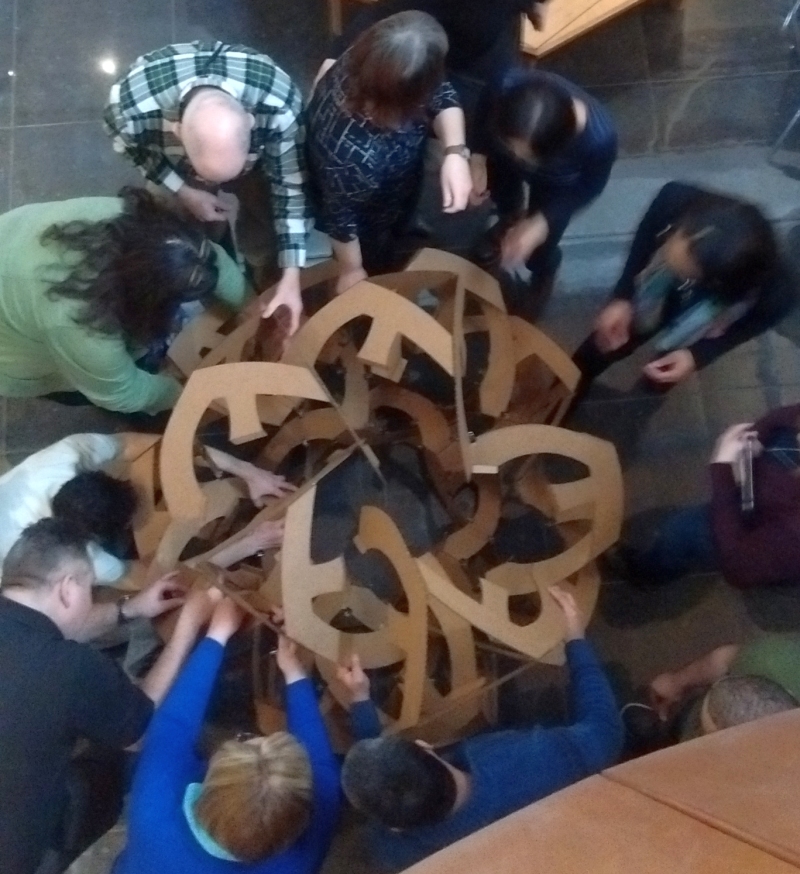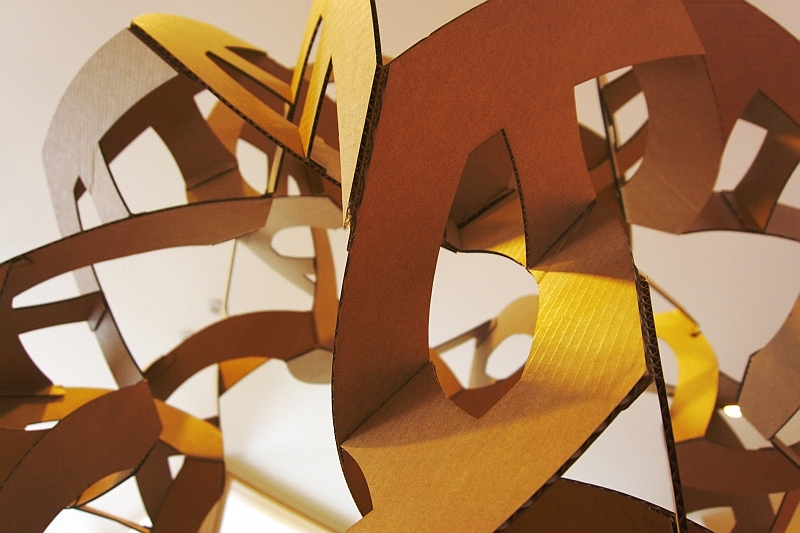13. After everything is clamped together and checked for
correctness, students can remove clamps one at a time, brush
glue on the flap, and replace the clamps. It is easiest to work
in pairs: one person handles a glue palette and glue brush while
their partner manipulates the clamps and flaps. If using
black binder clamps, one handle of the clamp can be folded flat
as a mark that the corner has been glued. Students can
work from all sides at once, looking at the clamp handles to
locate any unmarked corners that need glue. If using
clothes pins, improvise some way to distinguish which flaps have
been glued. It works well to first do just the top half,
then turn it over to do the other half.
14. After the glue dries (typically 15 minutes) the clamps can
be removed. Hang the completed construction on display.

